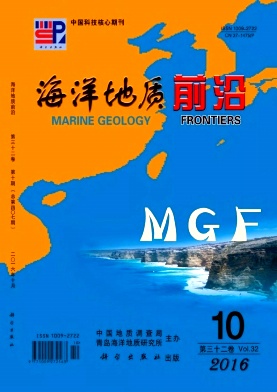WU Shuyu, CHEN Jianwen, LIU Jun, LIANG Jie, YUAN Yong, TAO Rong, . APPLICATION OF S-WAVE WELL LONGING PREDICTED FOR PRESTACK INVERSION IN THE SOUTH YELLOW SEA BASIN[J]. Marine Geology Frontiers, 2016, 32(10): 51-59. doi: 10.16028/j.1009-2722.2016.10008
| Citation: |
WU Shuyu, CHEN Jianwen, LIU Jun, LIANG Jie, YUAN Yong, TAO Rong, . APPLICATION OF S-WAVE WELL LONGING PREDICTED FOR PRESTACK INVERSION IN THE SOUTH YELLOW SEA BASIN[J]. Marine Geology Frontiers, 2016, 32(10): 51-59. doi: 10.16028/j.1009-2722.2016.10008
|
APPLICATION OF S-WAVE WELL LONGING PREDICTED FOR PRESTACK INVERSION IN THE SOUTH YELLOW SEA BASIN
-
WU Shuyu1,2,
-
CHEN Jianwen1,2,
-
LIU Jun1,2,3,
-
LIANG Jie1,2,
-
YUAN Yong1,2,
-
TAO Rong1,2,
-
4
-
1 Key Laboratory of Marine Hydrocabon Resources and Environment Geology, Ministry of Land and Resource, Qingdao Insistute of Marine Geology, CGS, Qingdao 266071, China;
-
2 Laboratory for Marine Mineral Resources, Qingdao National Laboratory for Marine Science and Technology, Qingdao 266061, China;
-
3 College of Faculty of Earth Resource, China University of Geosciences, Wuhan 430074, China;
-
4 College of Geoscience and Surveying Engineering, China University of Mining&Technology, Beijing 100083, China
-
Abstract
The Meso-Palaeozoic is a mixed clastic-carbonate sequence of epicontinental sea in the South Yellow Sea basin. In recent years, oil and gas exploration has been accelerated there, in order to meet the needs of oil and gas supply. Geophysical methods for reservoir prediction need to be improved as well from post-stack impedance inversion to pre-stack impedance inversion, as the shear wave velocity is the most important parameter for reservoir evaluation and fluid identification. Therefore, the shear wave velocity well logging is very important to the study area. Based on the measured rock physics elastic modulus, introducing in the coefficient of consolidation through the Biot-Gassmann equation, picking out the coefficient of consolidation when the relative error is minimum between calculated P-wave velocity and measured P-wave velocity, and then substituting the coefficient of consolidation into the Biot-Gassmann equation, we finally get the S-wave velocity. The prediction results of this paper fit well with the velocity distribution law in the formation, which has provided the reliable basic data for prestack reservoir description. From the S-wave prediction, the P-wave velocity of carbonate rock varies from 5 500 m/s to 6 500 m/s and the S-wave velocity of carbonate rock from 3 000 m/s to 3 200 m/s, Vp/Vs ratio is dramatic in the pore developed dolomitic limestone, and the S-wave velocity change is large than the P-wave velocity in the pore developed clastic rock.
-

-
-
Access History







 DownLoad:
DownLoad: